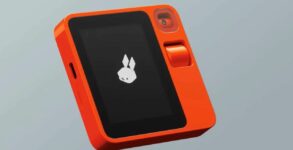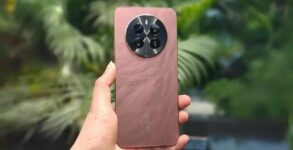iPhone’s AI: If you are unsure about laundering your garments according to the instructions, you have likely consulted the label for directions. This badge was discovered on a hooded sweatshirt from Taylor Swift’s The Eras Tour, befalling the unfortunate.
If you lack familiarity with the laundry care industry’s hieroglyphics, those symbols might be of little significance to you. You have company.
Thus, a small amount of technology becomes relevant. Although it is possible to conduct an internet search to decipher the language on the tag, doing so would be like inquiring with Google about a song that you only dimly remember.
Conversely, as some users on TikTok have discovered, your iPhone is capable of translating. You are only required to capture an image of the identifier.
The term for this Apple device-exclusive function is Visual Look Up. We have previously discussed its potential applications in distinguishing books, flora, landmarks, and works of art.
Since then, iPhone users have discovered that it can also discern clothing tags, as noted in a video with over 3.3 million views that was published on TikTok and featured the user @wtfaleisa.
7 Ways to Fix Turn Passcode off Greyed Out on iPhone
You are improperly washing your jeans, claims the CEO of Levi’s.
Before anything else, photograph the tag that is located on your shirt, sweater, trousers, or similar item. We will utilize the tag from the previously noted Eras Tour hoodie.
Launch the corresponding image in the Photos app. A collection of shimmering dots should appear atop the screen at the bottom, which resembles a miniature dryer or washing machine arranged in the shape of a circle. That is illustrated in the image below.
Tapping that icon will reveal a prompt to search for “Laundry Care.”
The emblems are deconstructed using “Siri Knowledge” results in this section. The findings indicate that our hooded sweatshirt can be laundered using a “normal process,” ensuring that the temperature does not surpass 85 °F. The use of bleach is prohibited, and ironing is permitted, but the temperature should not exceed 230 °F.
We also examined several other items using the Visual Look Up function, such as a pair of Levi jeans and a Nike hooded sweatshirt (which adhered to the same instructions, except for “do not dry clean” and “tumble dry” at a maximum temperature of 140 °F) and “do not dry clean” and “tumble dry” at a maximum temperature of 140 °F, respectively,” and “iron at temperatures below 230 °F; bleach exclusively with non-chlorine agents. Nevertheless, the CEO of Levi’s might hold an alternative viewpoint.
All of these are components of a Federal Trade Commission regulation requiring garment manufacturers to include maintenance instructions. This includes “textile apparel worn to cover or protect the body,” with the following exceptions: “excluded” are shoes, gloves, hats, handkerchiefs, belts, suspenders, neckties, and “non-woven garments made for one-time use.”
This does not imply that a tag offering laundry advice will never be present with these “excluded” items. The following marking was discovered on (or within) a Carhartt beanie. Notably, it also provides explanations for the motifs’ meanings.
As per FTC regulations, certain articles of clothing are exempt from the need for a permanent care label. This encompasses “products that can undergo the most rigorous cleaning, bleaching, drying, ironing, and dry cleaning processes,” provided that a temporary label reading “wash or dry clean, any normal method” is affixed to the item.
According to the FTC, importers and manufacturers are obligated to “provide warnings if the garment cannot be cleaned without causing harm.” Therefore, if your garment is susceptible to burning when ironed, that information should be included on the tag.
The care symbols that your iPhone is examining are those that the American Society for Testing and Materials (ASTM) has approved for use by manufacturers. These symbols, as seen on the hoodie for The Eras Tour, can be substituted for words. Many European nations utilize these icons, which the FTC observes are comparable but not identical to those of the International Standards Organization.
What exactly are Stanley cups, and what makes them so well-liked?
According to the FTC, product tags must include the following information: whether the item is machine-washable or hand-washable, whether bleach is safe for it, how to dry it, how to iron it, and whether there is a “care procedure that will harm the product.” Specific care elements, such as the utmost temperature permissible during a wash cycle, may vary from product to product or be omitted if they do not pose a risk of damage to the product. A tag may also include instructions for dry laundering.
As illustrated in this FTC handout, the fundamental symbols that can be observed on a tag are as follows: a container filled with water representing washing instructions; a triangle representing bleaching; a square, occasionally accompanied by a circle representing drying; an iron; and a circle representing dry cleaning.
Fortunately, the task of memorizing each of these icons is unnecessary; one may instead request the iPhone to identify them.


















